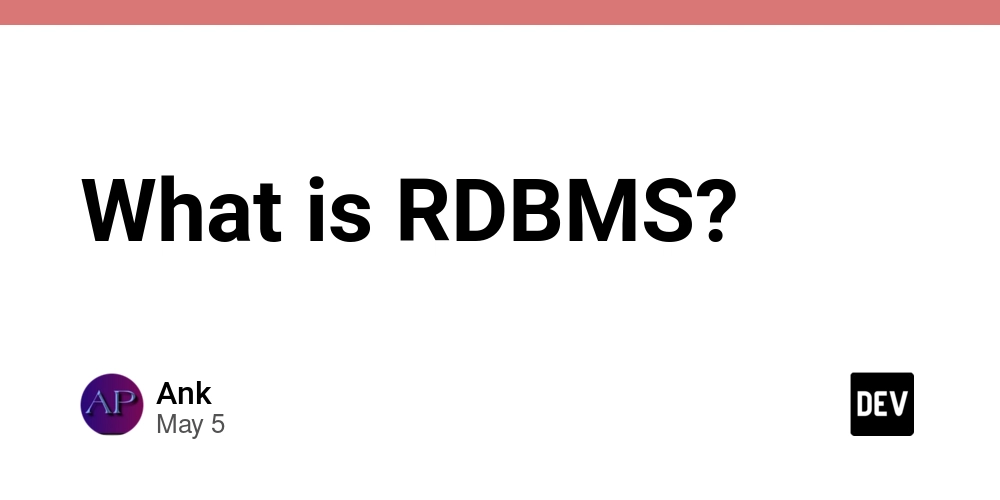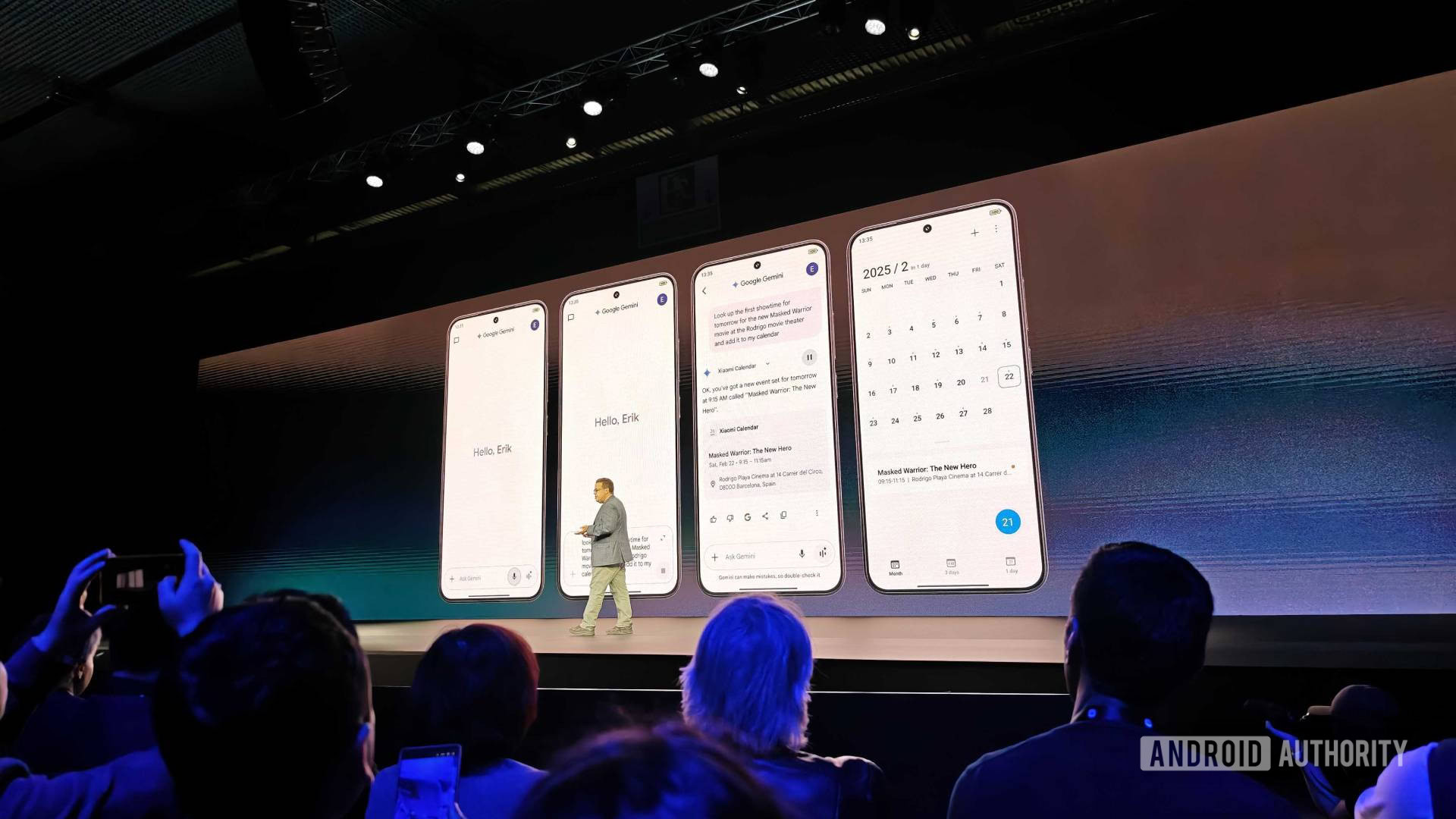What is RDBMS?
The relational model (RM) is an approach to managing data using a structure and language consistent with first-order predicate logic, first described in 1969 by English computer scientist Edgar F. Codd,[1][2] where all data are represented in terms of tuples, grouped into relations. A database organized in terms of the relational model is a relational database. The purpose of the relational model is to provide a declarative method for specifying data and queries: users directly state what information the database contains and what information they want from it, and let the database management system software take care of describing data structures for storing the data and retrieval procedures for answering queries. Most relational databases use the SQL data definition and query language; these systems implement what can be regarded as an engineering approximation to the relational model. A table in a SQL database schema corresponds to a predicate variable; the contents of a table to a relation; key constraints, other constraints, and SQL queries correspond to predicates. However, SQL databases deviate from the relational model in many details, and Codd fiercely argued against deviations that compromise the original principles. A relation consists of a heading and a body. The heading defines a set of attributes, each with a name and data type (sometimes called a domain). The number of attributes in this set is the relation's degree or arity. The body is a set of tuples. A tuple is a collection of n values, where n is the relation's degree, and each value in the tuple corresponds to a unique attribute.[6] The number of tuples in this set is the relation's cardinality.[7]: 17–22 Relations are represented by relational variables or relvars, which can be reassigned.[7]: 22–24 A database is a collection of relvars.[7]: 112–113 In this model, databases follow the Information Principle: At any given time, all information in the database is represented solely by values within tuples, corresponding to attributes, in relations identified by relvars.[7]: 111 Constraints edit A database may define arbitrary boolean expressions as constraints. If all constraints evaluate as true, the database is consistent; otherwise, it is inconsistent. If a change to a database's relvars would leave the database in an inconsistent state, that change is illegal and must not succeed.[7]: 91 In general, constraints are expressed using relational comparison operators, of which just one, "is subset of" (⊆), is theoretically sufficient.[citation needed] Two special cases of constraints are expressed as keys and foreign keys: Keys edit A candidate key, or simply a key, is the smallest subset of attributes guaranteed to uniquely differentiate each tuple in a relation. Since each tuple in a relation must be unique, every relation necessarily has a key, which may be its complete set of attributes. A relation may have multiple keys, as there may be multiple ways to uniquely differentiate each tuple.[7]: 31–33 An attribute may be unique across tuples without being a key. For example, a relation describing a company's employees may have two attributes: ID and Name. Even if no employees currently share a name, if it is possible to eventually hire a new employee with the same name as a current employee, the attribute subset {Name} is not a key. Conversely, if the subset {ID} is a key, this means not only that no employees currently share an ID, but that no employees will ever share an ID.[7]: 31–33 Foreign keys edit Main article: Foreign key A foreign key is a subset of attributes A in a relation R1 that corresponds with a key of another relation R2, with the property that the projection of R1 on A is a subset of the projection of R2 on A. In other words, if a tuple in R1 contains values for a foreign key, there must be a corresponding tuple in R2 containing the same values for the corresponding key.[7]: 34 Relational operations edit Users (or programs) request data from a relational database by sending it a query. In response to a query, the database returns a result set. Often, data from multiple tables are combined into one, by doing a join. Conceptually, this is done by taking all possible combinations of rows (the Cartesian product), and then filtering out everything except the answer. There are a number of relational operations in addition to join. These include project (the process of eliminating some of the columns), restrict (the process of eliminating some of the rows), union (a way of combining two tables with similar structures), difference (that lists the rows in one table that are not found in the other), intersect (that lists the rows found in both tables), and product (mentioned above, which combines each row of one table with each row of the other). Depending on which other sources you consult, there are a number of other operators – many of which can be defined in terms of those listed above. These include semi

The relational model (RM) is an approach to managing data using a structure and language consistent with first-order predicate logic, first described in 1969 by English computer scientist Edgar F. Codd,[1][2] where all data are represented in terms of tuples, grouped into relations. A database organized in terms of the relational model is a relational database.
The purpose of the relational model is to provide a declarative method for specifying data and queries: users directly state what information the database contains and what information they want from it, and let the database management system software take care of describing data structures for storing the data and retrieval procedures for answering queries.
Most relational databases use the SQL data definition and query language; these systems implement what can be regarded as an engineering approximation to the relational model. A table in a SQL database schema corresponds to a predicate variable; the contents of a table to a relation; key constraints, other constraints, and SQL queries correspond to predicates. However, SQL databases deviate from the relational model in many details, and Codd fiercely argued against deviations that compromise the original principles.
A relation consists of a heading and a body. The heading defines a set of attributes, each with a name and data type (sometimes called a domain). The number of attributes in this set is the relation's degree or arity. The body is a set of tuples. A tuple is a collection of n values, where n is the relation's degree, and each value in the tuple corresponds to a unique attribute.[6] The number of tuples in this set is the relation's cardinality.[7]: 17–22
Relations are represented by relational variables or relvars, which can be reassigned.[7]: 22–24 A database is a collection of relvars.[7]: 112–113
In this model, databases follow the Information Principle: At any given time, all information in the database is represented solely by values within tuples, corresponding to attributes, in relations identified by relvars.[7]: 111
Constraints
edit
A database may define arbitrary boolean expressions as constraints. If all constraints evaluate as true, the database is consistent; otherwise, it is inconsistent. If a change to a database's relvars would leave the database in an inconsistent state, that change is illegal and must not succeed.[7]: 91
In general, constraints are expressed using relational comparison operators, of which just one, "is subset of" (⊆), is theoretically sufficient.[citation needed]
Two special cases of constraints are expressed as keys and foreign keys:
Keys
edit
A candidate key, or simply a key, is the smallest subset of attributes guaranteed to uniquely differentiate each tuple in a relation. Since each tuple in a relation must be unique, every relation necessarily has a key, which may be its complete set of attributes. A relation may have multiple keys, as there may be multiple ways to uniquely differentiate each tuple.[7]: 31–33
An attribute may be unique across tuples without being a key. For example, a relation describing a company's employees may have two attributes: ID and Name. Even if no employees currently share a name, if it is possible to eventually hire a new employee with the same name as a current employee, the attribute subset {Name} is not a key. Conversely, if the subset {ID} is a key, this means not only that no employees currently share an ID, but that no employees will ever share an ID.[7]: 31–33
Foreign keys
edit
Main article: Foreign key
A foreign key is a subset of attributes A in a relation R1 that corresponds with a key of another relation R2, with the property that the projection of R1 on A is a subset of the projection of R2 on A. In other words, if a tuple in R1 contains values for a foreign key, there must be a corresponding tuple in R2 containing the same values for the corresponding key.[7]: 34
Relational operations
edit
Users (or programs) request data from a relational database by sending it a query. In response to a query, the database returns a result set.
Often, data from multiple tables are combined into one, by doing a join. Conceptually, this is done by taking all possible combinations of rows (the Cartesian product), and then filtering out everything except the answer.
There are a number of relational operations in addition to join. These include project (the process of eliminating some of the columns), restrict (the process of eliminating some of the rows), union (a way of combining two tables with similar structures), difference (that lists the rows in one table that are not found in the other), intersect (that lists the rows found in both tables), and product (mentioned above, which combines each row of one table with each row of the other). Depending on which other sources you consult, there are a number of other operators – many of which can be defined in terms of those listed above. These include semi-join, outer operators such as outer join and outer union, and various forms of division. Then there are operators to rename columns, and summarizing or aggregating operators, and if you permit relation values as attributes (relation-valued attribute), then operators such as group and ungroup.
The flexibility of relational databases allows programmers to write queries that were not anticipated by the database designers. As a result, relational databases can be used by multiple applications in ways the original designers did not foresee, which is especially important for databases that might be used for a long time (perhaps several decades). This has made the idea and implementation of relational databases very popular with businesses.
Database normalization
edit
Main article: Database normalization
Relations are classified based upon the types of anomalies to which they're vulnerable. A database that is in the first normal form is vulnerable to all types of anomalies, while a database that is in the domain/key normal form has no modification anomalies. Normal forms are hierarchical in nature. That is, the lowest level is the first normal form, and the database cannot meet the requirements for higher level normal forms without first having met all the requirements of the lesser normal forms.






































































































































































![[The AI Show Episode 145]: OpenAI Releases o3 and o4-mini, AI Is Causing “Quiet Layoffs,” Executive Order on Youth AI Education & GPT-4o’s Controversial Update](https://www.marketingaiinstitute.com/hubfs/ep%20145%20cover.png)














































































































































































-Assassin's-Creed-Shadows---How-to-Romance-Lady-Oichi-00-06-00.png?width=1920&height=1920&fit=bounds&quality=70&format=jpg&auto=webp#)
































































































 Stolen 884,000 Credit Card Details on 13 Million Clicks from Users Worldwide.webp?#)






























































































![Chrome 136 tones down some Dynamic Color on Android [U]](https://i0.wp.com/9to5google.com/wp-content/uploads/sites/4/2023/03/google-chrome-logo-4.jpg?resize=1200%2C628&quality=82&strip=all&ssl=1)















![Apple Shares Official Teaser for 'Highest 2 Lowest' Starring Denzel Washington [Video]](https://www.iclarified.com/images/news/97221/97221/97221-640.jpg)

![Under-Display Face ID Coming to iPhone 18 Pro and Pro Max [Rumor]](https://www.iclarified.com/images/news/97215/97215/97215-640.jpg)































































































![[AWS][Update]Amazon Route 53 Profiles now supports VPC endpoints](https://media2.dev.to/dynamic/image/width=800%2Cheight=%2Cfit=scale-down%2Cgravity=auto%2Cformat=auto/https%3A%2F%2Fdev-to-uploads.s3.amazonaws.com%2Fuploads%2Farticles%2Fkievlp34cqfcmla7dj6z.png)



